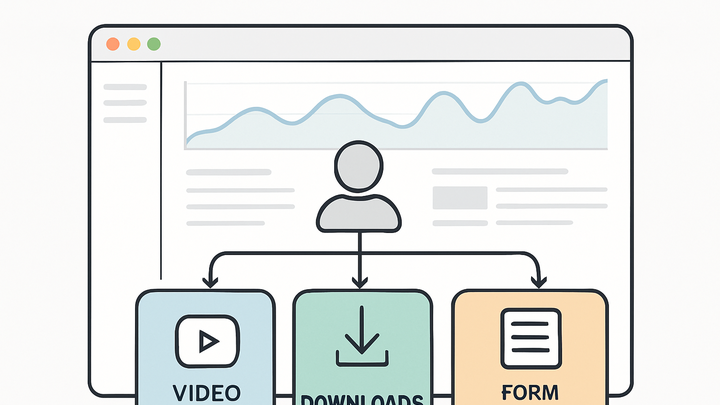Published on 2025-06-22T03:14:51Z
What is Event Category? Examples and Best Practices
Event Category is a core concept in web analytics that groups related user interactions under a common
label, making it easier to analyze similar events at scale. Each event sent to an analytics platform can
include a category, action, label, and optionally other parameters. By structuring events into categories,
analysts can quickly segment and filter large volumes of interaction data—for example, grouping all video
plays, file downloads, or form submissions together. In Google Analytics 4 (GA4), you specify an
event_category parameter within the gtag('event', …) call, while a cookie-free
analytics solution like PlainSignal uses a similar property in its custom event payload. Consistent use of
event categories improves report clarity, facilitates A/B testing analysis, and enhances cross-platform
comparisons. Improper category naming or misalignment between tools can lead to confusing data and
inaccurate insights.
Event category
Event Category groups similar user interactions in web analytics for organized reporting and analysis.
Overview of Event Category
This section introduces the concept of Event Category, its role in analytics, and why it matters for data organization and reporting.
-
Definition
An Event Category is a high-level label that groups related events (user interactions) into meaningful segments. It is typically used alongside Event Action and Event Label to provide structure and context to analytics data.
-
Purpose and benefits
Grouping events under categories enables streamlined reporting, easier filtering in dashboards, and clearer insights into user behavior. It also simplifies data analysis by organizing similar interactions—such as all video plays or downloads—under one heading.
Implementing Event Category in Analytics Platforms
Learn how to set the Event Category parameter when logging events in both GA4 and PlainSignal.
-
GA4 implementation
In Google Analytics 4, include
event_categoryin yourgtag('event', …)call. Example:gtag('event', 'video_play', { 'event_category': 'Video', 'event_label': 'Homepage Hero' }); -
PlainSignal implementation
First, install the PlainSignal tracking script on your page. Example:
<link rel="preconnect" href="//eu.plainsignal.com/" crossorigin /> <script defer data-do="yourwebsitedomain.com" data-id="0GQV1xmtzQQ" data-api="//eu.plainsignal.com" src="//cdn.plainsignal.com/plainsignal-min.js"></script>Then, send a custom event with a category property:
PlainSignal('event', 'button_click', { category: 'Navigation', label: 'Signup Button' });
Best Practices and Common Pitfalls
Follow these guidelines to maintain clean, consistent event categories and avoid common mistakes that can muddy analytics data.
-
Naming conventions
Choose clear, descriptive names and apply consistent capitalization, punctuation, and terminology across all categories.
-
Be consistent
Use the same naming pattern (e.g., Title Case or lowercase) for all category names.
-
Use descriptive names
Ensure each category name clearly conveys the group of events it represents.
-
-
Common pitfalls
Avoid creating too many narrowly defined categories or changing names mid-stream, which can fragment data and complicate analysis.
-
Overly granular categories
Don’t split similar events into multiple tiny categories; group them under a broader label instead.
-
Inconsistent use
Stick to predefined categories and avoid spelling variations to ensure accurate reporting.
-
-
Monitoring and optimization
Regularly review your event taxonomy for relevance, consolidate redundant categories, and adjust naming as your product evolves.
